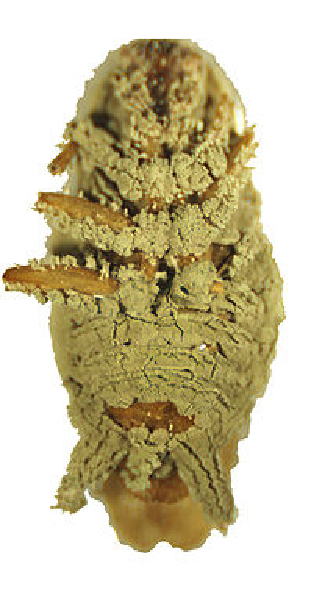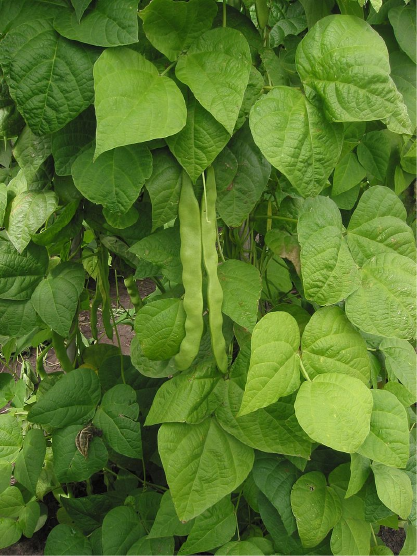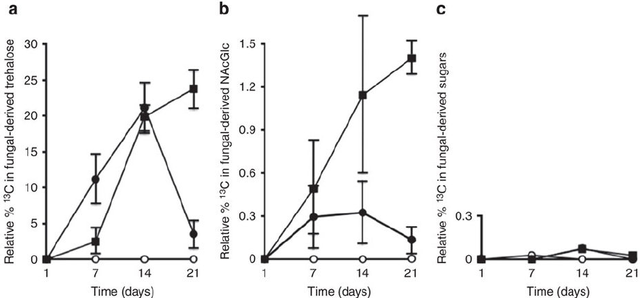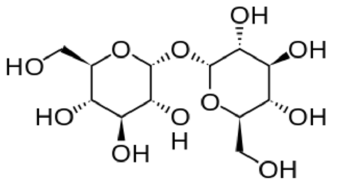"Carbon For Nitrogen Please" Say The Trees To The Fungus..."Sure Thing!" Say The Fungi "...But Pay No Mind To The Insect Corpses"
I had a brief conversation a week or so ago on steemit.chat with @donkeypong about a really fascinating TED talk given by Suzanne Simard. This talk was about how trees transfer nutrients to one another through use of fungal networks. If this piques your interest you can check it out through this NPR link:
http://www.npr.org/2017/01/13/509350471/how-do-trees-collaborate
I bring up this conversation because as a result of watching that TED talk (which I recommend you watch as well, it truly is interesting and you can tell that Suzanne really loves her work) an article published in Nature Communications yesterday (1/18/17) caught my eye. This article is titled "Carbon translocation from a plant to an insect-pathogenic endophytic fungus," and describes work done to track the exchange of nutrients between a soil fungus and plants. Today I will break this research down for you, I hope you will find it as interesting as I have. It is certainly outside of my area of expertise and provides me an opportunity to expand my understandings of how marvelously complex life on earth is.

The Fungus
The study worked on a fungus called Metarhizium robertsii which is both an endophyte and insect pathogen. To clarify that sentence a bit, an endophyte is an organism that spends at least a portion of its life living inside of a plant with out causing a disease. Endophytes have been shown in the past to benefit plants with some enhancing growth and others increasing the amount of nutrients the plant can obtain. However in addition to being a plant endophyte, this particular fungus is also an insect pathogen. The figure above is of a dead cockroach which was infected with a fungus of this family. So Metarhizium robertsii is uniquely beneficial to the plants it lives symbiotically as it also protects them from insects.
The Plant
The plant used by the researchers in this study was Phaseolus vulgaris:

Plant-Fungus Carbon-Nitrogen Exchange
Now plants exchanging carbon to fungi in exchange for nitrogen is not a new discovery. There are several published examples of this happening, and they are usually plant-fungus pairs where the fungi is not able to acquire enough carbon from the soil so it obtains it in the form of sugars from its symbiotic plant partner. In exchange for the sugars, the fungi provides the plant with extra nutrients from the soil such as nitrogen or phosphorous. (Source)
Uh okay...Well Then What Is Unique About This Study?
The unique and fascinating part of plant pairings with Metarhizium robertsii is that the fungus gets its nitrogen from insects. So here, researchers were studying the complex relationship between plants providing carbon obtained through photosynthetic processes, to fungi which in-turn provide nitrogen obtained from the corpses of infected insects back to the plant.
Studying Movement of Carbon From the Beans To The Fungi
Researchers were able to study the movement of atmospheric carbon into plants (and subsequently into the fungi) through use of CO2 where instead of normal Carbon-12 the researchers used the Carbon-13 isotope. The difference between Carbon-12 and Carbon-13 is the nuclear spin quantum number for carbon-13 is -1/2, while for carbon-12 it is zero. The spinning of Carbon-13 makes it behave like magnet. This allows researchers to use a technique called Nuclear Magnetic Resonance or NMR, which basically blasts the atoms with a strong magnetic field causing all of the spinning nuclei to line up. The NMR technique records the "spectra" which is the energy levels at which the nuclei flipped into the direction of the magnetic field.
Sugar samples from the plants could simply be measured by NMR and tested for the presence of high quantities of carbon-13, and the same for the fungi, allowing researchers to track the flow of Carbon in the plant-fungi symbiotic system.
How About Some Results?

So lets discuss what we are looking at in this figure starting with section (a).
Section (a) is looking at the fungus specific sugar trehalose.

Here the closed circles represent the amount of carbon-13 present in the trehalose sugar extracted from roots that have been colonized by the fungus but no insect present (the insect is the nitrogen source involved in the "exchange"). The closed squares are trehalose from roots colonized with the fungus with an insect present. Finally the open circles are the control roots with no fungus. From this we can see that Carbon-13 is present in the fungal sugar, and that if the fungus does not colonize the root then there is no sugar present (no Carbon-13).
Section (b) is looking similarly at a different fungal specific sugar GlcNAc (N-Acetylglucosamine)

Much like for (a) the closed circles are from roots colonized with the fungus but no insect, the closed squares are from roots colonized with the fungus with an insect and the open circles are from roots with not colonized by the fungus.
Here we see some interesting results, in that the amount of carbon-13 in the GlcNAc sugar is significantly higher when the an insect is present (closed circles show much less carbon-13 then do the closed squares).
Section (c) is much easier to explain, it is the amount of carbon-13 found in GlcNAc extracted from the fungus growing in soil with out a plant. It is also simple to explain, there is very little, the fungus needs the plant to get significant amounts of Carbon-13 when CO2 is the source.
Summing Up What They Learned
This data, according to the authors constitutes evidence that the exchange of nitrogen from the insect results in increased sharing of carbon from the plant to the fungus (evidenced by the higher amounts of Carbon-13 GlcNAc when an insect was present). In a previous publication these authors illustrated that plants can obtain a significant amount of their nitrogen from insects through their symbiotic partnership with this fungus (Source), this paper now confirms that the sharing is mutual and that in exchange for all of that nitrogen the plants give back some of their photo-synthetically absorbed carbon.

Sources
- http://www.nature.com/articles/ncomms14245
- https://en.wikipedia.org/wiki/Endophyte
- https://en.wikipedia.org/wiki/Metarhizium
- https://en.wikipedia.org/wiki/Navy_bean
- https://en.wikipedia.org/wiki/Trehalose
- https://en.wikipedia.org/wiki/N-Acetylglucosamine
- https://www.ncbi.nlm.nih.gov/pubmed/22723421
All non Cited Images Are Available Under Creative Commons Licenses, The Primary Article From Nature: Communications is also Open Access and Available for Use Under a Creative Commons Licence
Any Gifs Are From Giphy.com and Are Also Available for Use Under Creative Commons Licences
If you like my work, please consider giving me a follow: @justtryme90. I am a PhD holding biochemist with a love for science. My future science blog posts will cover a range of topics in the biology/chemistry fields.
Thank you for your continued support of my work! I appreciate all those who follow me (and those who don't too).
This post has been ranked within the top 50 most undervalued posts in the first half of Jan 20. We estimate that this post is undervalued by $4.62 as compared to a scenario in which every voter had an equal say.
See the full rankings and details in The Daily Tribune: Jan 20 - Part I. You can also read about some of our methodology, data analysis and technical details in our initial post.
If you are the author and would prefer not to receive these comments, simply reply "Stop" to this comment.
The price of STEEM is 0.163929 USD per STEEM
Mycorrhizal fungi is the internet of Earth!!
You have excellent research documentation my friend. Very clean, effective and streamlined. Liked and followed. Thanks!
Awesome post. The endophytes sound similar to our own microbiome in many ways:)
That sounds like a good analogy for them! Life has many examples of mutually beneficial symbiotic relationships. :D
Why was this flagged? Looks to be ineffectual but seems odd anyway.
You would have to ask the user who flagged it. I dunno, maybe they didn't like it?
It is customary to leave a reason though. Very weird.
Sure I guess, but I don't mind. I liked this post and am proud of it. :D
Shrugs
Fungus controls everything and that creeps me out tbh
Indeed it does influence a lot!
Great title! :D
It is amazing to see all that is now possible thanks to NMR. I am always amazed to see how nature cooperatively works so well. Something we humans should learn more, sometimes..
Thanks @lemouth :D
Edit Bonanza: Jeez, hard getting that thumb nail image to show up!
Edit 2: Still finding errors, I need a better editor (and by that I mean eyes/brain).